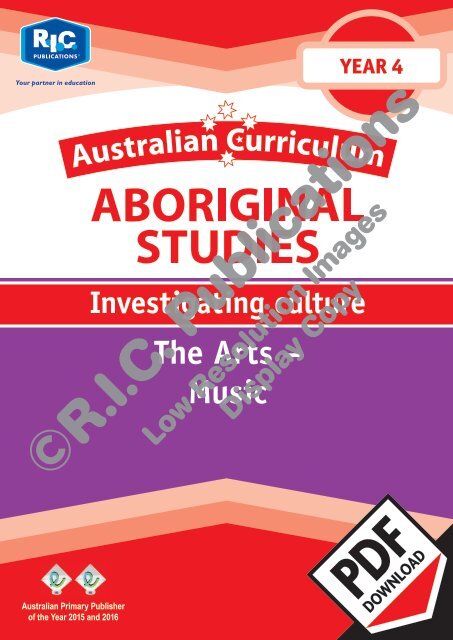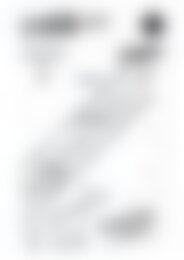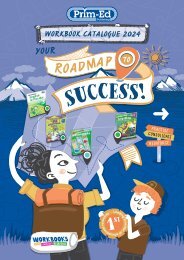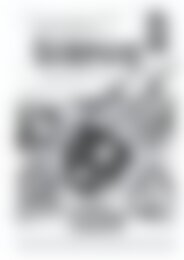20453_AC_Aboriginal_studies_Year_4_Investigating_Country_Place_The_Arts_Music
Create successful ePaper yourself
Turn your PDF publications into a flip-book with our unique Google optimized e-Paper software.
Australian Curriculum <strong>Aboriginal</strong> <strong>studies</strong><br />
(<strong>Year</strong>s 3 and 4)<br />
Published by R.I.C. Publications ® 2015<br />
Revised 2018<br />
Copyright © Joanne Crawford 2015<br />
RIC–<strong>20453</strong><br />
Warning: This series may contain the names and images of<br />
<strong>Aboriginal</strong> and Torres Strait Islander people now deceased.<br />
All material identified by is material subject to<br />
copyright under the Copyright Act 1968 (Cth) and is owned<br />
by the Australian Curriculum, Assessment and Reporting<br />
Authority 2015.<br />
For all Australian Curriculum material except<br />
elaborations: This is an extract from the Australian<br />
Curriculum.<br />
Elaborations: This may be a modified extract from the<br />
Australian Curriculum and may include the work of other<br />
authors.<br />
Disclaimer: <strong>AC</strong>ARA neither endorses nor verifies the<br />
accuracy of the information provided and accepts no<br />
responsibility for incomplete or inaccurate information. In<br />
particular, <strong>AC</strong>ARA does not endorse or verify that:<br />
• <strong>The</strong> content descriptions are solely for a particular year<br />
and subject;<br />
• All the content descriptions for that year and subject<br />
have been used; and<br />
Copyright Notice<br />
A number of pages in this book are worksheets. <strong>The</strong><br />
publisher licenses the individual teacher who purchased<br />
this book to photocopy these pages to hand out to<br />
students in their own classes.<br />
Except as allowed under the Copyright Act 1968, any other<br />
use (including digital and online uses and the creation of<br />
overhead transparencies or posters) or any use by or for<br />
other people (including by or for other teachers, students<br />
or institutions) is prohibited. If you want a licence to do<br />
anything outside the scope of the BLM licence above,<br />
please contact the Publisher.<br />
This information is provided to clarify the limits of this<br />
licence and its interaction with the Copyright Act.<br />
For your added protection in the case of copyright<br />
inspection, please complete the form below. Retain this<br />
form, the complete original document and the invoice or<br />
receipt as proof of purchase.<br />
Name of Purchaser:<br />
Date of Purchase:<br />
Supplier:<br />
School Order# (if applicable):<br />
Signature of Purchaser:<br />
• <strong>The</strong> author’s material aligns with the Australian<br />
Curriculum content descriptions for the relevant year<br />
and subject.<br />
You can find the unaltered and most up to date version of this<br />
material at http://www.australiancurriculum.edu.au/<br />
This material is reproduced with the permission of <strong>AC</strong>ARA.<br />
Internet websites<br />
In some cases, websites or specific URLs may be recommended. While these are checked and rechecked at the time of publication,<br />
the publisher has no control over any subsequent changes which may be made to webpages. It is strongly recommended that the class<br />
teacher checks all URLs before allowing students to access them.<br />
View all pages online<br />
PO Box 332 Greenwood Western Australia 6924<br />
Website: www.ricpublications.com.au<br />
Email: mail@ricgroup.com.au
Foreword<br />
Australian Curriculum <strong>Aboriginal</strong> <strong>studies</strong> (<strong>Year</strong>s 3 and 4) is one of a four-book series designed to<br />
complement the teaching of <strong>Aboriginal</strong> <strong>studies</strong> in the national curriculum. Each unit of work is<br />
designed to emphasise and recognise the importance of <strong>Aboriginal</strong> culture within Australia.<br />
Titles in this series are:<br />
• Australian Curriculum <strong>Aboriginal</strong> <strong>studies</strong> (Foundation)<br />
• Australian Curriculum <strong>Aboriginal</strong> <strong>studies</strong> (<strong>Year</strong>s 1 and 2)<br />
• Australian Curriculum <strong>Aboriginal</strong> <strong>studies</strong> (<strong>Year</strong>s 3 and 4)<br />
• Australian Curriculum <strong>Aboriginal</strong> <strong>studies</strong> (<strong>Year</strong>s 5 and 6)<br />
Contents<br />
Teachers notes................................................ ii-iii<br />
Australian Curriculum links............................ iv-vii<br />
<strong>Investigating</strong> <strong>Country</strong>/<strong>Place</strong>.......................2–25<br />
Nhunda country...............................................2–5<br />
Drage family....................................................6–9<br />
Language.....................................................10–13<br />
Different <strong>Aboriginal</strong> groups..........................14–17<br />
Where did <strong>Aboriginal</strong> people live?...............18–21<br />
Sustaining resources...................................22–25<br />
<strong>Investigating</strong> culture..................................26–49<br />
Diversity of cultures.....................................26–29<br />
<strong>The</strong> <strong>Arts</strong> – Dance and drama.......................30–33<br />
<strong>The</strong> <strong>Arts</strong> – <strong>Music</strong>..........................................34–37<br />
Important occasions....................................38–41<br />
National celebrations...................................42–45<br />
Symbolism of flags......................................46–49<br />
<strong>Investigating</strong> people.............................. 50–85<br />
First contact – the Macassans................ 50–53<br />
First contact – European explorers......... 54–57<br />
First contact – Zuytdorp.......................... 58–61<br />
Traditional life.......................................... 62–65<br />
<strong>Aboriginal</strong> totems.................................... 66–69<br />
Archaeological sites................................ 70–73<br />
<strong>Aboriginal</strong> identity.................................... 74–77<br />
National identity....................................... 78–81<br />
Personal identity...................................... 82–85<br />
Answers ................................................. 86–90<br />
Acknowledgements<br />
Special thanks to the following people who made a contribution to this book:<br />
• Mr Clayton Drage<br />
• Mauretta Drage<br />
• Grant Drage<br />
• Elaine Morgan<br />
• Annette Whitby<br />
• Colleen Drage<br />
R.I.C. Publications ® www.ricpublications.com.au Australian Curriculum <strong>Aboriginal</strong> <strong>studies</strong> (<strong>Year</strong>s 3 and 4) i
Teachers notes<br />
How to use this book<br />
<strong>The</strong> book is divided into three sections—<strong>Investigating</strong> <strong>Country</strong>/<strong>Place</strong>, <strong>Investigating</strong> culture and<br />
<strong>Investigating</strong> people.<br />
Each section has a number of units which link directly to Australian Curriculum knowledge and<br />
understanding content descriptions of the Geography, Science, History and <strong>The</strong> <strong>Arts</strong> learning areas.<br />
Links to other curriculum areas are included.<br />
Features of the book<br />
• An overview of Australian Curriculum skills relating to each unit of work<br />
• Answers or possible answers have been provided for student activities. Some activities may be<br />
open-ended and require further research, resulting in a variety of possible answers. <strong>The</strong>se are<br />
marked as ‘Teacher check’. Answers can be found at the back of the book on pages 86–90.<br />
Unit format<br />
Each unit of work follows a similar four-page format, comprising a teachers page followed by three<br />
student pages. <strong>The</strong> student pages relate to some aspect of the content description at the top of the<br />
teachers page.<br />
Teachers page<br />
<strong>The</strong> first page in each four-page unit is a teachers page, which includes the following information:<br />
<strong>The</strong> title of the section<br />
<strong>The</strong> content description, code<br />
and Australian Curriculum learning<br />
area (History/Geography/Science or<br />
<strong>The</strong> <strong>Arts</strong>) which is covered by the<br />
four-page unit<br />
An elaboration explaining what<br />
the students will be aiming to learn<br />
by completing the activities in the<br />
four-page unit<br />
Key questions relating to the focus<br />
of the unit<br />
Skills and inquiry that students<br />
will utilise to complete the activities<br />
in the unit<br />
<strong>The</strong> title of the unit<br />
Teacher notes which provide<br />
suggestions for using the resources<br />
and completing the activities on the<br />
following three student pages<br />
Background information provides<br />
additional notes to assist the<br />
teacher to understand and help<br />
students understand the unit<br />
An additional activity extends<br />
student learning beyond the scope of<br />
the student pages<br />
<strong>The</strong> overall concept of the unit<br />
Resources to support teaching and<br />
learning activities within the unit<br />
ii Australian Curriculum <strong>Aboriginal</strong> <strong>studies</strong> (<strong>Year</strong>s 3 and 4) R.I.C. Publications ® www.ricpublications.com.au
Student pages<br />
Teachers notes<br />
<strong>The</strong> three student pages follow a similar format and include the following information:<br />
<strong>The</strong> title of the unit<br />
A number indicates one of the<br />
three student pages in the unit<br />
A text or activity with<br />
instructions for completing<br />
Appropriate artwork aids<br />
understanding of the text<br />
R.I.C. Publications ® www.ricpublications.com.au Australian Curriculum <strong>Aboriginal</strong> <strong>studies</strong> (<strong>Year</strong>s 3 and 4) iii
<strong>Investigating</strong> culture<br />
<strong>The</strong> <strong>Arts</strong> – <strong>Music</strong><br />
Identify intended purposes and meanings as they listen to music using the elements of music to<br />
make comparisons, starting with Australian music, including music of <strong>Aboriginal</strong> and Torres Strait<br />
Islander Peoples (<strong>AC</strong>AMUR087) <strong>Year</strong>s 3 and 4 <strong>The</strong> <strong>Arts</strong> – <strong>Music</strong><br />
Elaboration<br />
Understanding that people listen to music from many<br />
cultures<br />
Key questions<br />
• Why do people listen to music?<br />
• What is the purpose of music?<br />
• What is involved in musical production?<br />
Skills and inquiry<br />
• Examining music in their community and comparing<br />
it to other music of different people, times and<br />
culture (<strong>AC</strong>AMUR087 elaboration)<br />
• Identifying meaning and describing purposes in<br />
music from different social, cultural or historical<br />
contexts (<strong>AC</strong>AMUR087 elaboration)<br />
• Collect, access and present different types of data<br />
using simple software to create information and<br />
solve problems (<strong>AC</strong>TDIP009) (Technologies–<br />
Digital Technologies)<br />
Concepts<br />
• <strong>Arts</strong> and culture<br />
• Dreaming<br />
• Indonesia<br />
Resources<br />
• A clip showing the<br />
different genres of music.<br />
• A clip of traditional<br />
<strong>Aboriginal</strong> music.<br />
• A clip of traditional<br />
Indonesian music.<br />
Teacher information<br />
Teachers notes<br />
• Play different forms of music for the students to listen<br />
to.<br />
• Show to students and<br />
discuss some of the musical genres.<br />
• Write some different genres on the board and give<br />
students the opportunity to write an example of a<br />
song for each genre.<br />
• When referring to <strong>Aboriginal</strong> music, use the clip<br />
to give the students the<br />
opportunity to listen to the distinct sound of <strong>Aboriginal</strong><br />
music.<br />
• Use for students to<br />
listen to an example of Balinese music.<br />
Background information<br />
• Much of Balinese arts links to Hindu beliefs, gods and<br />
spirits.<br />
• Gamelan orchestras play Bali's traditional music.<br />
• <strong>The</strong> Gamelan orchestras have a variety of traditional<br />
instruments.<br />
• <strong>Aboriginal</strong> music is influenced by the Dreamtime.<br />
Additional activity<br />
As a craft activity, students can attempt to make<br />
a musical instrument of their own using various<br />
materials. <strong>The</strong>y can test their instruments and have a<br />
partner analyse it to see which elements of music the<br />
sound has.<br />
34 Australian Curriculum <strong>Aboriginal</strong> <strong>studies</strong> (<strong>Year</strong>s 3 and 4) R.I.C. Publications ® www.ricpublications.com.au
<strong>The</strong> <strong>Arts</strong> – <strong>Music</strong>—1<br />
<strong>Music</strong> is an important part of life to people from many different cultures. <strong>Music</strong><br />
is broad and includes examples from all parts of the world. Every culture has its<br />
own forms of music and musical instruments.<br />
Most music has certain parts to it.<br />
• <strong>The</strong> ‘pitch’ tells whether the sounds are high or<br />
low.<br />
• <strong>The</strong> ‘tempo’ tells whether the music is fast or<br />
slow.<br />
• <strong>The</strong> ‘dynamics’ can be the volume of a sound<br />
or note in music.<br />
• <strong>The</strong> ‘rhythm’ in music can make patterns of sounds.<br />
• <strong>The</strong> ‘pulse’ is the steady beat of a song.<br />
‘Genre’ is a word used to describe different types of music. Some genres include<br />
country, classical, pop and reggae.<br />
People listen to music in lots of places and for different reasons. Some people<br />
use music to help them relax. Some people like to listen to music before they play<br />
sport to help get them ready, while others prefer to listen to music for enjoyment.<br />
1. Think about where you experience music. Write three examples below.<br />
(a)<br />
(b)<br />
(c)<br />
2. How does music make you feel? Why?<br />
3. Use to hear different genres of music. Write<br />
some examples below.<br />
4. How do you think music can be used to communicate ideas?<br />
R.I.C. Publications ® www.ricpublications.com.au Australian Curriculum <strong>Aboriginal</strong> <strong>studies</strong> (<strong>Year</strong>s 3 and 4) 35
<strong>The</strong> <strong>Arts</strong> – <strong>Music</strong>—2<br />
<strong>Aboriginal</strong> and Torres Strait Islander music is very<br />
distinct from that of other cultures. <strong>Aboriginal</strong> and<br />
Torres Strait Islander music has rhythm, pitch, form<br />
and dynamics within it. Many of the songs tell a story<br />
and are influenced by the Dreamtime.<br />
Various groups used different instruments, including<br />
the didgeridoo, clap sticks, flat rocks, drums and seed<br />
rattles. Clapping their hands and slapping their bodies were also included.<br />
1. Listen to and then complete the table by<br />
writing detailed information in the spaces.<br />
Pitch (high or low?)<br />
Elements of <strong>Aboriginal</strong> music<br />
Tempo (slow or fast?)<br />
Dynamics<br />
What instruments were used?<br />
What genre is it?<br />
Rhythm<br />
2. What type of mood does this music create for the audience?<br />
36 Australian Curriculum <strong>Aboriginal</strong> <strong>studies</strong> (<strong>Year</strong>s 3 and 4) R.I.C. Publications ® www.ricpublications.com.au
<strong>The</strong> <strong>Arts</strong> – <strong>Music</strong>—3<br />
<strong>Music</strong> is very important in the Balinese culture, along with dance and drama. <strong>The</strong><br />
gamelan orchestra is probably the most well known musical sound. Gamelans<br />
are traditional musical groups in Bali or Java which use mainly percussion<br />
instruments. One of the instruments used is the ‘gangsa’, which is like a<br />
xylophone. Its keys are made of bronze or iron. <strong>The</strong> keys are beaten with a mallet<br />
to make a musical sound. Bronzed gongs called ‘reong’ are played by four men<br />
in the gamelan orchestra. <strong>The</strong> ‘trompong’ is similar to the reong, but only one<br />
person plays it. <strong>The</strong>re are also ‘cengcengs’, which are similar to cymbals, and<br />
‘kendangs’, which are Balinese drums. <strong>The</strong> style of Balinese music changes from<br />
soft, beautiful sounds to fast and dramatic music. Some of this music can be very<br />
loud.<br />
1. Listen to and then complete the table by<br />
writing detailed information in the spaces.<br />
Pitch (high or low?)<br />
Elements of Balinese music<br />
Tempo (slow or fast?)<br />
Dynamics<br />
What instruments were used?<br />
What genre is it?<br />
Rhythm<br />
2. Compare <strong>Aboriginal</strong> and Balinese music by listing similarities and differences.<br />
Write your answers on a separate sheet of paper.<br />
R.I.C. Publications ® www.ricpublications.com.au Australian Curriculum <strong>Aboriginal</strong> <strong>studies</strong> (<strong>Year</strong>s 3 and 4) 37
Answers<br />
<strong>Investigating</strong> culture<br />
<strong>The</strong> <strong>Arts</strong> – <strong>Music</strong><br />
Page 35<br />
1-2. Teacher check<br />
3. Answers may vary.<br />
4. Teacher check<br />
Page 36<br />
1. Answers may vary.<br />
2. Teacher check<br />
Page 37<br />
Teacher check<br />
88 Australian Curriculum <strong>Aboriginal</strong> <strong>studies</strong> (<strong>Year</strong>s 3 and 4) R.I.C. Publications ® www.ricpublications.com.au


